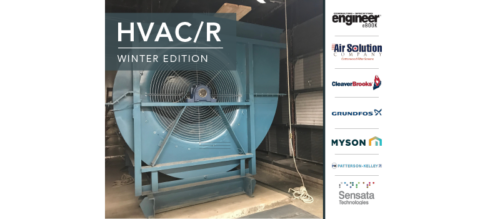How COVID-19 made everyone a little smarter
The average population now cares more about HVAC, allowing products and systems to gain more of the spotlight
IAQ insights
- Indoor air quality (IAQ) systems are more mainstream, giving mechanical engineers and IAQ experts a platform to educate more of the general population.
- Government bodies, code/standard organizations and guidelines have elevated IAQ topics greatly, thanks to COVID-19.
A segment about indoor air quality (IAQ) recently ran on the TV program “60 Minutes.” The experts interviewed for the piece discussed how COVID-19 brought commercial buildings into a whole new light. Specifically, commercial buildings that don’t usually require specialty exhaust systems — offices, schools, churches and other non-health care structures — were largely ignored until the pandemic.
Laypersons who didn’t know anything about mechanical engineering or heating, ventilation and air conditioning (HVAC) systems thought that most buildings were inherently fine, and that breathing indoors would generally be easy and safe. The TV segment focused on a group that attended a “super spreader” event, highlighting their awareness and helping them understand how the HVAC system might affect IAQ.
What can engineers do to bridge the IAQ gap? Experts who understand air changes per hour, dedicated outside air systems, MERV filters and similar systems quickly caught on that these technologies, working in tandem with other solutions, were the answer to people going back to the office, school or the grocery store in the early days of COVID-19 and are now making more extensive adjustments.
To create cleaner air inside, engineers partnered high-quality air filtration with outside air and added in a dash of HVAC controls to create commercial real estate HVAC systems that are efficient and effective. Layer attention to, or removal of, indoor air pollutants, cleaning, maintenance and other similar problems, and you get a building that is probably cleaner than many others.
The Occupational Safety and Health Administration published IAQ guidelines in 2011, and maintains an updated website to help building owners or facility managers. The U.S. Environmental Protection Agency (EPA) has published IAQ guides for office building occupants. The EPA also has its National Ambient Air Quality Standards (NAAQS).
And, while they’ve been around for several years, engineers started paying very close attention to ASHRAE 62.1: Ventilation and Acceptable Indoor Air Quality and ASHRAE 170: Ventilation of Health Care Facilities.
More advanced concepts include:
- Indoor environmental quality (IEQ) in the WELL Building Standard.
- World Health Organization’s COVID-19 fact sheets.
- ASHRAE 241: Control of Infectious Aerosols.
Fast-forward to now, and the industry knows that proper design, balancing, operation, maintenance and overall use can make a difference for building occupants. The National Bureau of Economic Research and a variety of property managers have gathered data about the relationship between healthy buildings and property value or rental prices.
It’s a real breath of fresh air (pun intended) that these topics engineers have known about for years are now firmly on the general population’s radar.
Do you have experience and expertise with the topics mentioned in this content? You should consider contributing to our CFE Media editorial team and getting the recognition you and your company deserve. Click here to start this process.






